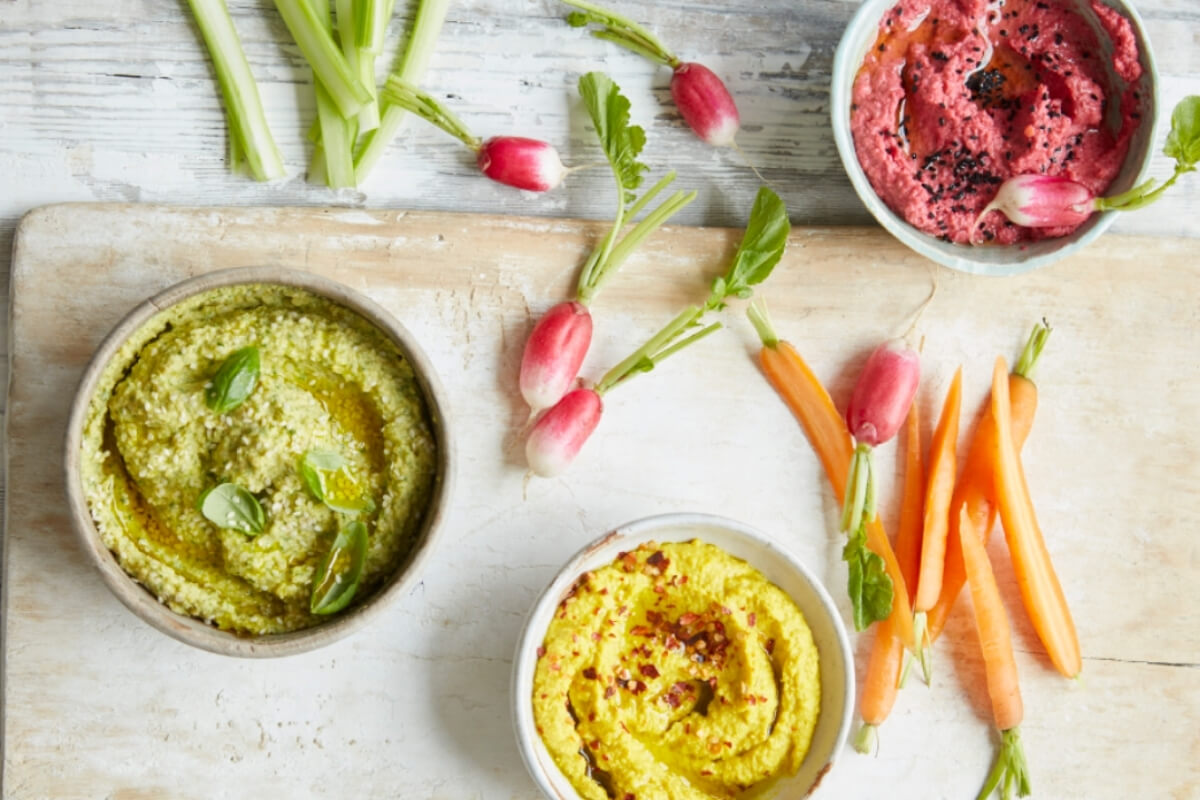As we look towards the future of food and nutrition, plant-based protein has shown to be a sustainable option to feed our increasing population. This diet shift is a growing movement throughout the world since people are becoming more aware of how their personal choices affect the environment and the future.
You may think of going plant-based for the environment, your health, animal welfare, or even religious or spiritual reasons. Many people are also deciding to incorporate more vegan alternatives into their regular diet to save money and explore new food options.
Whatever their reasoning, there is one common concern among us exploring a plant-based diet;
How Do I Get Enough Protein?
For people transitioning from omnivorous diets, this is often a daunting feat because they are unfamiliar with getting their protein from sources other than meat. But the truth is that there are a plethora of vegan protein sources, many of which are affordable and easy to incorporate into your everyday diet.
_v2_042220.png?width=940&name=%23703196%20-%20%20Sources%20of%20protein%20for%20vegans(FB%20post)_v2_042220.png)
How Can You Stay Healthy With Plant-Based Proteins?
One of the main differences between animal and plant-based protein is its nutritional content. The human body produces 11 amino acids, but we must get other amino acids from our food to be healthy.
Amino acids in proteins are the building blocks for muscles and tissues and assist with immune function. Animal protein sources are a complete protein, meaning that they contain all 9 essential amino acids not made by our body.
But do not fear - some vegan-friendly foods are also complete proteins too!
These Complete Vegan Proteins Include:
- Quinoa
- Amaranth
- Buckwheat
- Hempseed
- Spirulina
- Soybeans
- Chia Seeds
- Nutritional yeast
- Classic Combination of Rice and Beans
In addition to the many choices of plant-based complete protein sources, other vegan foods are also excellent protein sources. Nearly all plants contain at least one of the nine essential amino acids (these are incomplete proteins). By eating diverse combinations of plant-based proteins, it is readily achievable to meet your body's nutritional needs.
How To Combine Incomplete Proteins To Create Complete Proteins:
- Nuts or seeds with whole grains (nut butter on whole wheat toast, oats with lentils in burger patties)
- Whole grains with beans (beans and rice; hummus and pita bread; TVP or bean-based chili and crackers; refried beans and tortillas)
- Beans with nuts or seeds (salad with chickpeas and sunflower seeds; hummus with pumpkin seeds)
- For extra nutrients and protein, add veggies like Brussels Sprouts, Asparagus, Mushrooms, Broccoli, Peas, Kale, Corn, or even an artichoke with some vegan mayonnaise!
I Can’t Believe It's Vegan! - High Protein Meat Alternatives
- Tofu
- Tempeh
- Seitan
- Beyond Meat
- Vegan Protein Powder - add a spoonful to your oatmeal and smoothies, or get creative by making some protein power balls or granola bars
- Bob’s Red Mill Product Textured Vegetable Protein (TVP) - Meatless Ground Beef Substitute
From the Earth - Whole Foods Packed with Protein
.jpg?width=650&name=Copy%20of%20Protein-packed-vegan-plant-based-foods3%20(1).jpg)
- Legumes- can be used in soups, dips, salads, or as a side dish, even made into amazing meatless burger patties!
- Edamame
- Peanuts
- Lentils
- Mung Beans
- Green Peas
- Large White Beans
- Split Peas
- Garbanzo, Kidney, Black, Navy, Pinto, Cannellini Beans
Nuts - can be incorporated into nearly every cuisine, and are an excellent source of diverse nutrients and can be eaten raw, soaked, or lightly dry roasted. Most make excellent bases for Dairy-Free Alternatives!
- Walnuts and Pecans
- Almonds
- Pistachios
- Cashews
- Pine nuts
- Seeds - nutrient-dense, especially when sprouted! Some can be made into alternative milk options, or sprinkled on salads. Soak before eating or adding to smoothies for smoother digestion!
- Hemp hearts
- Chia seeds
- Pumpkin seeds (aka pepitas)
- Sunflower Seeds
- Flax Seeds
- Sesame Seeds
- Chia Seeds
- Grains and Pseudo-cereals - can be used in breakfast and dinner bowls, soups, salads, as a side dish, made into alternative flour, and more!
- Quinoa
- Buckwheat
- Amaranth
- Teff
- Wheat Berries or Kamut
- Wild Rice
- Sorghum
- Millet
- Triticale
- Oats
- Couscous
- Ezekiel bread - keeps in the freezer for eternity
%20(1)%20(1).jpg?width=800&name=Copy%20of%20Protein-packed-vegan-plant-based-foods2%20(1)%20(1)%20(1).jpg)
Here Are Some High-Protein Vegan Meals and Side Dishes To Try!
Breakfast
- Chocolate Monkey Superfood Smoothie Bowl
- Hawaiian Spirulina Superfood Smoothie Bowl
- Piña Colada Superfood Smoothie
- Superfood Workout Booster Smoothie
- Mint Chocolate Chip Protein Superfood Smoothie
- Tofu and Kale Kick-Start Superfood Breakfast Scramble
Lunch & Dinner
- Super Green White Bean Vegan Mac And Cheese Nut Free and GF
- Southwestern Sweet Potato Quinoa Avocado Salad GF
- Pesto Stuffed Portobello Mushrooms
- GF Vegan Meatless Meatloaf
- Indian-Spiced Sautéed Lemon Coconut Kale with Chickpeas
- Panko Tofu Nuggets With Hidden Greens
- Lentil Mushroom Burger Recipe
- Walnut Lentil Tacos
- Midwestern Vegan Sloppy Joe’s
Dairy-Free Alternatives
- Cashew Cream Cheese
- Feta Cheese with Tofu
- Easy Dairy-Free Homemade Yogurt
- Easy Soy Milk Recipe
- How to Make Vanilla Hemp Milk
- How To Make Cashew Milk
- How To Make Coconut Milk
- How To Make Raw Almond Milk
- How To Make Oat Milk Recipe
- Chocolate Superfood Banana Nice Cream
Protein Packed Dips & Sides
- Coconut Chia Pudding
- Creamy Turmeric Hummus
- Super Simple Homemade Basil Hummus
- Vibrant Homemade Beetroot Hummus Dip

Quick Tip For Making Homemade Hummus!
- Just make sure to soak and boil your beans (whether dried or canned) with a generous pinch of salt in order to soften the chickpeas for roasting or blending. This will give them a creamy interior, and flavor the garbanzo beans from within.
Plant-Based For the Animals, the Planet, and Yourself
By choosing to enjoy vegan meat-alternatives, you can sleep better, figuratively and literally, knowing that you are making the world a healthier, more sustainable place. Animal agriculture is one of the leading contributors to climate change and deforestation.
The greenhouse gasses produced by this industry are more than that of all boats, cars, and planes combined! Eating plant-based is also a compassionate choice because you do not contribute to the cycle of animals' suffering.
Also you are lowering your exposure to toxins and antibiotics that accumulate in your body from consuming meat products that contain these contaminates. The run off from waste eventually connects with our water systems as well, so always be sure to filter your water, ideally with a reverse osmosis system.
Instead of contributing to the demand for meat and animal products, choose to support businesses that work to make plant-based foods more accessible. Making your own healthy alternatives at home is becoming more common as well. Learn more about the health benefits of moving towards a more plant-based diet are today!
















.jpg)